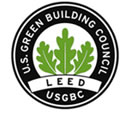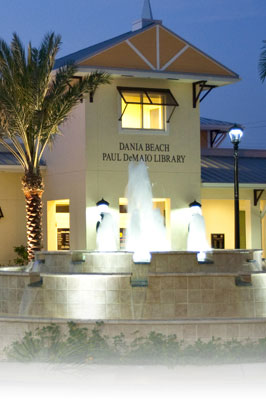The LEED Promise
 Stewardship of the environment is part of SRS's design philosophy. We believe that buildings should fit comfortably on their sites, be respectful of their context, and minimize their burden on the earth's resources. By making thoughtful design decisions as architects and engineers, we have an opportunity and a responsibility to make a positive contribution to the protection of our planet. We believe in an integrated, holistic approach to design. Under the guidance of our LEED Accredited Professionals, we use the LEED Green Building Rating System as one of many tools in the development of environmentally responsible projects.
Stewardship of the environment is part of SRS's design philosophy. We believe that buildings should fit comfortably on their sites, be respectful of their context, and minimize their burden on the earth's resources. By making thoughtful design decisions as architects and engineers, we have an opportunity and a responsibility to make a positive contribution to the protection of our planet. We believe in an integrated, holistic approach to design. Under the guidance of our LEED Accredited Professionals, we use the LEED Green Building Rating System as one of many tools in the development of environmentally responsible projects.
What Is LEED?
LEED is the acronym for Leadership in Energy and Environmental Design. The LEED program is a primary focus of the United States Green Building Council (USGBC). This 501(c)(3) nonprofit organization is a "community of leaders working to make green buildings available to everyone within a generation."
About USGBC
Based in Washington, DC, the United States Green Building Council is "committed to a prosperous and sustainable future for our nation through cost-efficient and energy-saving green buildings." USGBC comprises nearly 100 local affiliates and more than 16,000 member companies and organizations, and more than 160,000 LEED Professional Credential holders, including SRS and its staff.
Why Is LEED a Critical Component in Our Future?
According to USGBC, buildings in the United States are responsible for 39 percent of CO2 emissions, 40 percent of energy consumption, and 13 percent of water consumption. Greater building efficiency can meet 85 percent of future U.S. demand for energy, and a national commitment to green building has the potential to generate 2.5 million American jobs.
Sustainable Design
Sustainability can be broadly defined as a balance between human needs and productivity of natural systems. Sustainable design principles help to promote regeneration of the natural environment, minimizing impact on its resources while affording sound economical development. Good design decisions should be clearly guided by suitability, durability, economy, and common sense.
SRS Choices for Sustainable Design
- Building materials and systems selected for their ability to perform over the long term while maintaining their intended appearance and efficiency.
- Systems that conserve energy, increase the quality of the environment, and are far more cost effective in the long run.
- Materials for long-term durability that require less maintenance and less cost for upkeep, and make good business sense.
Key Benefits
Environmentally responsible buildings have benefits far beyond social responsibility. And sustainable design is good for business.
- Improved operational efficiency.
- Increased productivity.
- Improved financial performance.
- Enhanced occupant comfort.
- Improved quality of life.
LEED Project Experience
LEED certified:
Toyota/Lexus Training Facility (Interior Fitout) - LEED Gold
Lauderhill Municipal Building (New Construction) - LEED Silver
Children's Services Council of Broward County (New Construction) - LEED Silver
Paul DeMaio Branch Library, Dania Beach, FL (Commercial Interiors) - LEED Gold
LEED registered (seeking certification):
Fire Station 107, Miramar, FL (New Construction) - LEED Silver


 Dania Beach Paul DeMaio Library
Dania Beach Paul DeMaio Library